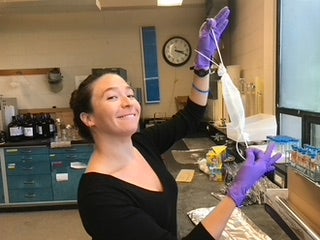
Wastewater treatment plants (WWTPs) are known to be an important source of PFAS in the environment by directly discharging into surface waters, but little is known about the volatile PFAS compounds that escape through the air into the atmosphere. It has been suggested that the volatilization of PFAS from indoor environments and WWTPs are important sources of contamination to the environment through long-range, atmospheric transport. However, few studies have focused on the links between the distribution of volatile PFAS within indoor environments and WWTPs, and their contribution to atmospheric contamination of PFAS.
In an effort to understand the environmental pathways of volatile PFAS, STEEP trainee Maya Morales-McDevitt, sets out to measure and compare the presence and abundance of volatile and neutral PFAS in different indoor environments and WWTPs. To do so, Morales-McDevitt will deploy passive samplers, which are low-cost, time-effective sampling tools, in a variety of indoor environments (carpeted kindergarten classrooms, houses, university offices, laboratories and classrooms, and an outdoor clothing store) and a WWTP in Providence, Rhode Island.

Morales-McDevitt will determine the atmospheric composition of these “forever chemicals” at the different sampling sites, and explore associations between the volatile PFAS in the gas phase with those in dust and carpet, to better understand the PFAS partitioning and exposure risk in carpeted classrooms. She will also investigate the extent to which neutral PFAS degrade to more stable, ionic PFAS in WWTPs by measuring their presence and abundance in air and effluent at different points throughout the treatment process, and determine the distribution and partitioning of the volatile and neutral PFAS within the WWTP.

